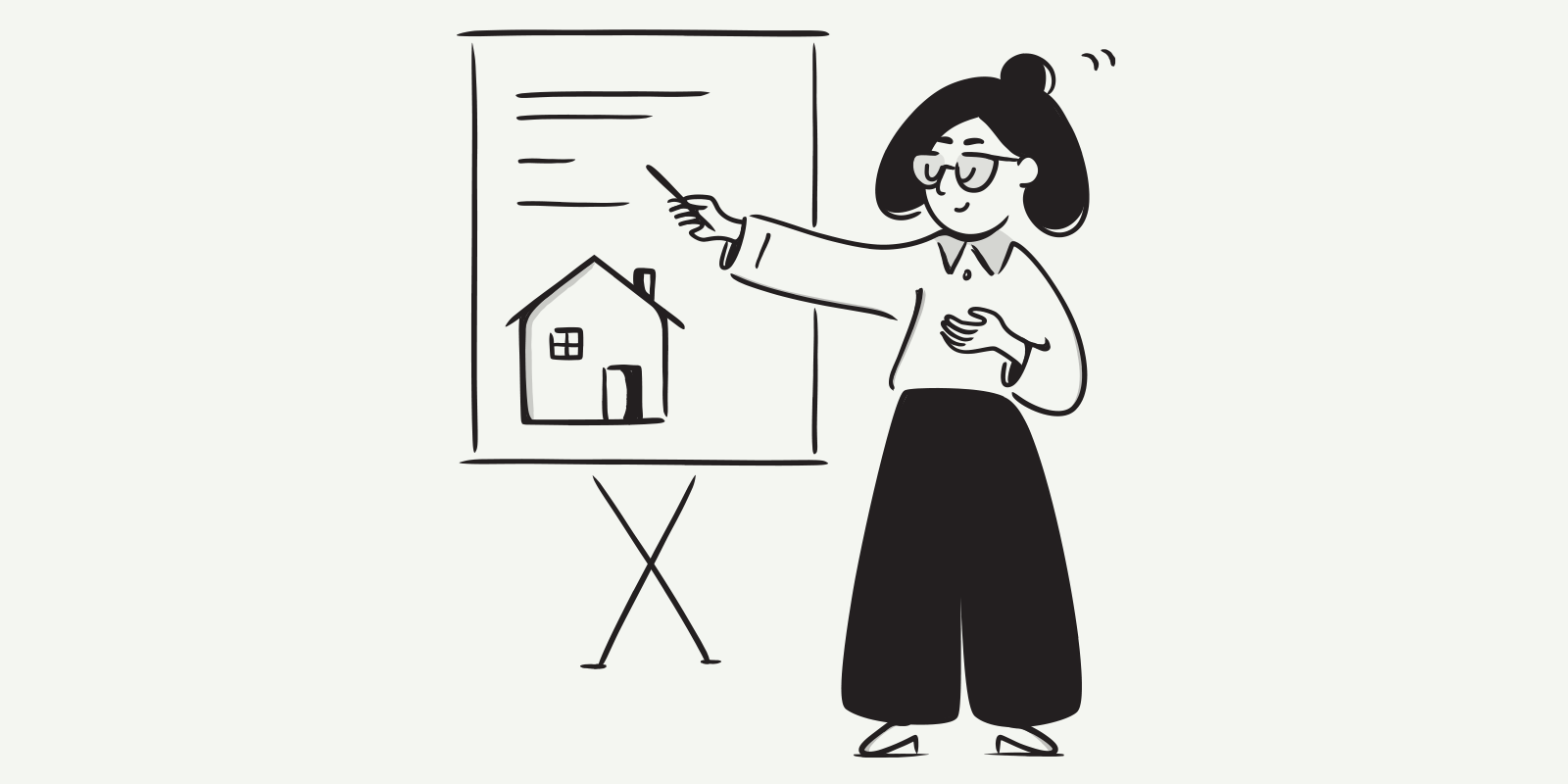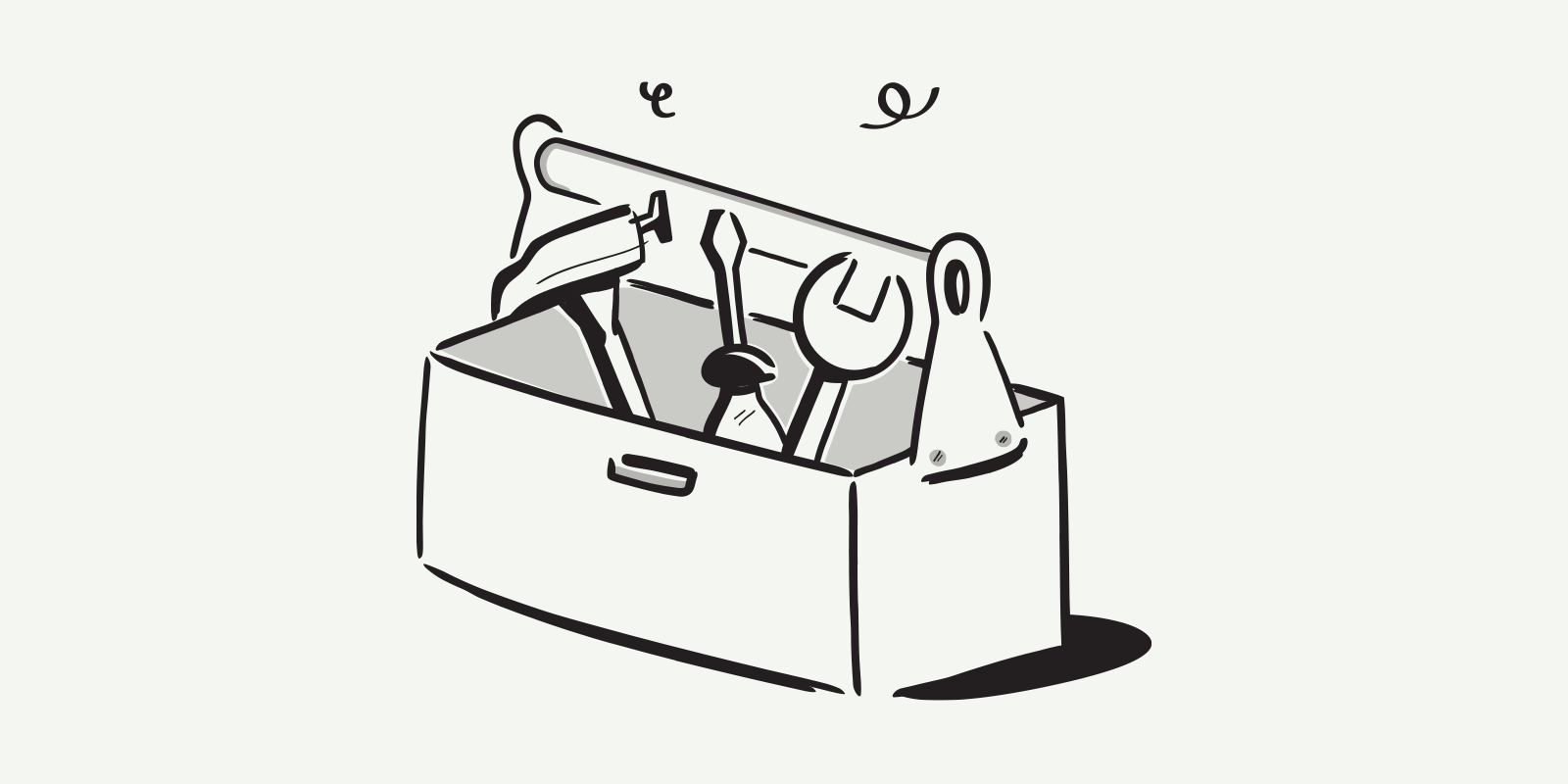Top 5 KPIs every landlord should track to grow their rental business

Generally, it’s fairly easy to tell if a property portfolio is making money. But identifying areas where income can be maximised isn’t so straightforward. It requires strategic tracking, concise expenditure mapping, and deliberate planning to achieve.
Tracking KPIs (Key Performance Indicators) is the first step for landlords aiming to grow their portfolio and maximise returns. In property management, KPIs represent measurable aspects of the business that landlords can monitor and improve to drive long-term success.
In this article, we’ll share the top five KPIs landlords should monitor – along with tracking methods – to transition from passive income generation to strategic portfolio growth.
Top 5 KPIs landlords can track to grow a rental business
To grow income across a property portfolio and strategically maximise income, here’s the top five KPIs landlords should track (and how).
1. Occupancy rate
Measuring occupancy rates helps determine if rentals are priced correctly or if you should raise prices. It also helps determine the impact of voids and whether your investments in tenant-find services are worthwhile.
For example, with a low occupancy rate, you could increase prices to cover the anticipated shortfall. Or, if occupancy rates are high but income isn’t growing, raising prices sustainably could grow revenue.
🔹How to calculate
For a single property: To determine occupancy rates for one property, divide the total number of nights over your chosen timeframe, and multiply this by 100 to get your percentage.
The formula will be (Total Number of Nights / Time Period) x 100 = Occupancy Rate (%).
For example, if a property has been occupied by a tenant for 275 nights out of 365 (a year), the calculation would be (275 ÷ 365) x 100, giving a 75% occupancy rate over the year.
Multiple properties: To calculate occupancy rates across a large property portfolio, divide the number of occupied units by the total number of units, and multiply this by 100 to get your percentage.
The formula is (Number of Occupied Units / Total Number of Units) x 100 = Occupancy Rate (%).
For example, if you have six units in total and only three are occupied, the calculation would be: (3 ÷ 6) x 100, and the occupancy rate would be 50%.
🔹What is a measure of success?
Rental properties should be profitable, and a good percentage depends on whether income is high or growing.
Higher occupancy rates don’t always mean high profits or profit growth, but they should, so you can consider raising rent. Low occupancy rates mean there’s room to grow income by reducing vacancies.
2. Gross/net rental yield
Gross rental yield measures rental income against the price of the property before expenses are deducted. Net rental yield calculates the true profit of a rental property after all expenses have been deducted.
This is beneficial for landlords to calculate and monitor, as it highlights which properties are profitable and which may be causing issues. It also helps landlords determine how strong the business is overall.
🔹How to calculate?
Gross rental yield: Divide the total annual rent by the property value, and multiply by 100 to get your percentage.
The formula is: (Total Annual Rent / Property Purchase Price) x 100 = Gross Rental Yield (%).
Net rental yield: Minus the total annual expenses from the total annual rental income, then divide by the property purchase price and multiply by 100 to get your percentage.
The formula is (Total Annual Rental Income – Total Annual Expenses) ÷ Property Purchase Price x 100 = Net Rental Yield (%).
For example, rental income for a two-bed property in Manchester is £1,500 per month and the property purchase price was £250,000.
The total annual expenses for the year, including the costs of mortgage payments, letting agent fees, insurances, maintenance, and a property management software subscription, come to a total of £10,000 per year.
The gross rental yield will be (£1,500 x 12) ÷ £250,000 x 100 = 7.2%.
The net rental yield will be (18,000 – 10,000) ÷ £250,000 x 100 = 3.2%.
3. Rent collection rate
Your rent collection rate calculates the percentage of rent that’s been received out of the total rent that’s due. Tracking this KPI can help landlords understand the status of their income and forecast anticipated cash flow.
Low rent collection rates can also highlight process-related issues. For example, there may be issues with tenant screening, rent collection reminders, letting agent effectiveness, or enforcement policies.
🔹How to calculate?
The formula is (Total Rent Collected / Total Rent Due) x 100 = Rent Collection Rate (%)
For example, you own three rental properties that are fully occupied. Rent payments are due monthly. Over the last 12 months, you should have received 36 payments in total, but there are 5 payments outstanding.
Therefore, your rent collection rate will be (31 ÷ 36) x 100 = 86%.
Top tip: Utilising property management software, like Rentila, can improve rent collection rates and make tracking easier, with automatic reminders and follow-ups sent to tenants when rent is due or overdue.
4. Tenant turnover rate
When a tenant gives notice on a property, landlords have to fund the costs of marketing for new tenants, maintaining the grounds, and paying the vacancy costs (i.e., the mortgage payments).
Understanding the turnover rate can help you pinpoint and address any major process, maintenance, or tenant problems.
For example, high turnover rates can be caused by:
- Property in poor condition
- Maintenance issues not addressed (or not addressed quickly)
- Restrictive or unattractive lease terms
- Poor communication or relationship between landlords/tenants
- Too high rental rates for the area/tenant market
🔹How to calculate?
To calculate your tenant turnover rate, divide the number of move-outs in a given timeframe by the number of units, and multiply by 100 to get your percentage.
The formula is (Number of Move-Outs / Number of Units) x 100 = Tenant Turnover Rate (%).
For example, if you have 10 units in total, and three tenants have moved out in the last 12 months, the turnover rate will be (3 ÷ 10) x 100 = 30%.
🔹What is a measure of success?
To maximise profits, landlords ideally want to achieve a low turnover rate (which means tenants stay in properties for longer) to reduce turnover costs. High turnover rates can mean a property’s income is unstable, high-risk, and unpredictable, which can cause cash flow issues.
Top tip: Dive even deeper into the figures to track the duration of each tenancy to see if tenants are ending their leases early or only staying short-term. This can help you pinpoint and address specific problems.
5. Maintenance costs per property
Properties aren’t created equally, and when you manage a large portfolio, some rentals will inevitably wind up costing more money than others.
Tracking maintenance costs per property is useful for several reasons. Firstly, it supports budget planning and ROI analysis, allowing you to plan effectively and prevent overspending.
Secondly, it helps you identify opportunities to lower expenses or spot high-cost properties (and the reasons behind them). For example, you can track if issues are repeatedly caused by the tenants or by something on/in the property (like the boiler or toilet).
🔹How to calculate?
To calculate maintenance costs per property, you can generate an average cost across your portfolio. To achieve this, divide your total maintenance cost by the total number of units in your portfolio.
The formula is: (Total Maintenance Cost / Total Number of Units) = Maintenance Cost Per Property (£).
For example, if you spend £500 per quarter on maintenance and you have 3 rental properties, the maintenance cost per property per quarter is £500 ÷ 3 = £167.
🔹What is a measure of success?
Ideally, you want your maintenance costs to be as low as possible, but this isn’t always feasible for keeping your tenants happy. Happy tenants can reduce turnover costs and prevent unpaid rent rates.
Therefore, a good measure of success is to ensure you aren’t running at a loss with how much you spend on maintenance across all properties, but also that maintenance issues aren’t causing high turnovers.
How to measure and track KPIs using PropTech software
Property management software offers an affordable, targeted solution to help landlords monitor rental properties and track performance across the portfolio. By helping landlords track crucial KPIs, it can also facilitate strategic growth through precise insights.
With Rentila (a property management solution designed for new and growing UK landlords), you can:
- Access real-time dashboards
- Easily set up, track, and monitor KPIs
- Generate automated KPI reports
- Integrate with bank feeds to track income/expenses
- Avoid duplication and errors with automated data entry
- Easily generate reports by property or portfolio
- Reduce administrative tasks through automated reminders
- Manage and standardise tenant forms/communication
- Streamline tax returns via dashboard overviews
- Track and manage planned/unplanned maintenance easily
Learn more about the benefits of property management software for UK landlords and portfolio managers.
FAQs
What are the most important KPIs landlords should track?
To maximise rental income and improve portfolio performance, landlords should monitor key metrics such as occupancy rate, gross and net rental yield, rent collection rate, tenant turnover rate, and maintenance costs per property. These KPIs offer actionable insights into profitability, efficiency, and tenant satisfaction.
How do I calculate the occupancy rate of my rental properties?
For a single property, divide the number of nights it was rented by the total number of nights in the period, then multiply by 100. For multiple properties, divide the number of occupied units by the total units. This helps landlords assess vacancy levels and pricing strategy effectiveness.
What’s the difference between gross and net rental yield?
Gross rental yield is calculated by dividing annual rental income by the property’s purchase price. Net rental yield subtracts annual expenses (like mortgage, maintenance, insurance) from rental income before dividing by the property price. Net yield gives a more accurate view of real profitability.
Why should landlords track tenant turnover rate?
High turnover increases costs due to vacancies, advertising, and maintenance. A low turnover rate usually means higher tenant satisfaction and more stable income. Tracking this KPI can help identify issues in lease terms, communication, or property conditions.
How can property management software help with KPIs?
Tools like Rentila simplify KPI tracking by offering real-time dashboards, automated reports, and integrated rent collection. This reduces admin time and helps landlords make informed decisions to grow their rental business efficiently.
What is the biggest risk of owning a rental property?
Landlords face many risks when managing a rental property. Some of the most common include unpaid rent, overspending on maintenance, and not filling vacancies quickly. But most risks can be effectively managed.
For example, landlords can invest in rent guarantee insurance to prevent income loss and financial strain when a tenant doesn’t pay rent. Or they can utilise property management software to accurately track performance and expenditure.
Is rental property still a good investment?
With the right property in the right area, investing in a rental property is still considered profitable, with ample potential to earn a full-time income.
Statistics show that UK landlords earn an average of £19,400 per property (source), with many (40% of) landlords owning between two to four rentals.
However, it’s important to choose a property wisely, manage risks effectively, and track expenditure/income closely to ensure the business is sustainable and profitable long-term.
Read more about investing in a buy-to-let property in 2025.
Things to remember: Top KPIs to track as a landlord and how software helps
- The most important KPIs to track as a landlord are your occupancy rates, gross/net rental yields, rent collection rates, tenant turnover rates, and the maintenance costs per property.
- Tracking performance and expenditure effectively ensures a rental property business stays profitable, efficient, and problem-free.
- Landlords can identify income growth opportunities by tracking various KPIs (e.g., by identifying turnover issues, rent collection concerns, maintenance cost efficiencies, and low occupancy rates).
- Utilising property management software (like Rentila) helps landlords quickly and easily monitor KPIs when managing multiple properties or a single rental via auto-reports and a user-friendly, customisable dashboard.


